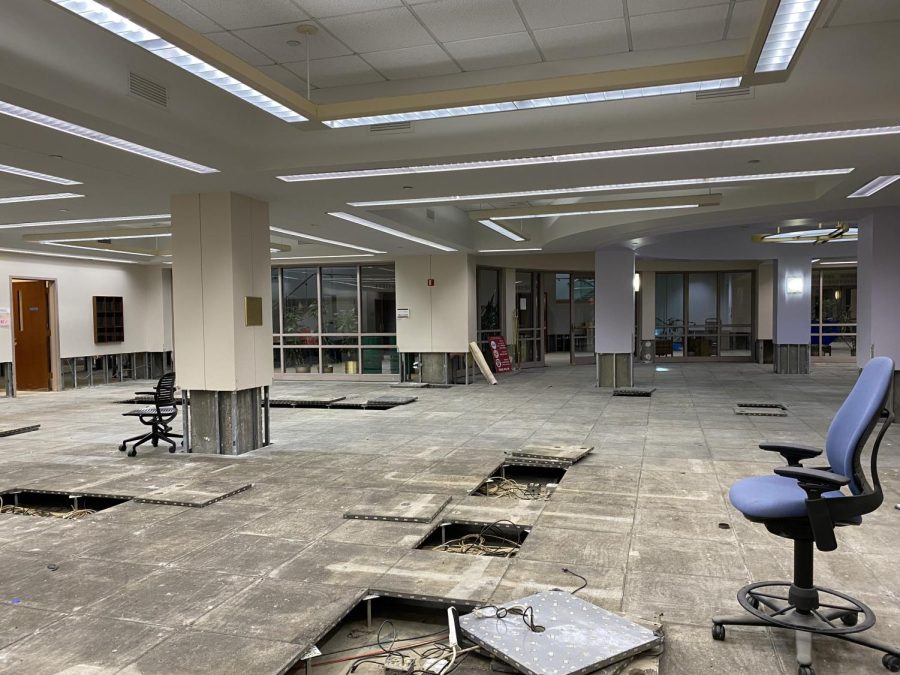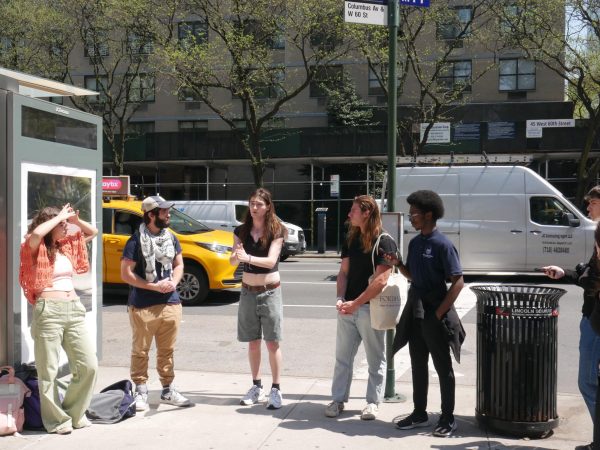Almost Two Months After Flooding, Walsh Library Still Dealing with Aftermath
On Sept. 1, Walsh Library’s lower level sustained significant flooding damage due to the heavy rains caused by the remnants of Hurricane Ida hitting New York City. The storm caused the university to close on Sept. 2, including Walsh Library. The library was also closed on Sept. 3. More than a month later, the building’s lower level has still not been reopened.
“The flood was, quite simply, a disaster,” said Linda LoSchiavo, director of libraries at Fordham. “Everything in the staff areas (Cataloging, Acquisitions, Serials) was under four plus feet of water and destroyed. This includes furniture, books, journals, files, PCs, scanners, printers, etc.”
In spite of the floodgate at the library’s loading area, the intensity and volume of the water flooded the driveway entrance, and water came in under the door. The sheer weight of the water hitting the side of the building also forced a window to blow open on the lower level allowing torrents of water to come in, said LoSchiavo.
In addition to the office space, many other areas were affected, such as the auditorium, LITE center and TV studio.
“The Flom Auditorium had water up to the stage. The seats, stage and control room are all beyond repair and must be replaced. The EIC TV studio took in several feet of water and cameras and equipment are no longer usable. LITE took in about a foot of water,” said LoSchiavo.
The new Learning and Innovation Technology Environment (LITE) Center suffered the least amount of damage. “It will be closed for the remainder of the semester while we await new carpeting and some replacement furniture,” said LoSchiavo.
With the whole lower level flooded, 90%of equipment was destroyed. New books waiting to be cataloged, books waiting for reclassification and certain issues of hard copy journals are also gone.
“At this point we are confident that all equipment will be replaced,” said LoSchiavo. “Some of these items can be replaced, some can be sent for freeze drying and some are completely gone. Floodwaters do not discriminate in their path to destruction.”
While there was significant damage to the lower level, the upper floors of the library suffered no water damage. Though other staff were unaffected by the closure of the lower level, the library staff who worked on the lower level had to be relocated. A study lounge on the first floor was converted into office space, and one department is temporarily working out of the Fordham Westchester Library, said LoSchiavo.
After a month, the restoration process is still underway. “The entire lower level must be dried out, the sheetrock that has been pulled from the walls must be replaced, carpets will be replaced, replacements for damaged equipment and furniture must be ordered, delivered and installed,” said LoSchiavo.
“I am extremely grateful to Fordham’s Facilities Operations Team who stepped in immediately to begin the cleanup and remediation efforts in the library. They are the heroes,” added LoSchaivo. “The gratitude of the University community must also go to the tireless efforts of the library staff members who have worked on the cleanup every day since Sept. 1, standing on wet floors, sifting through soaked files trying to save what little was salvageable, moving their operations to different floors, all with the sole purpose of keeping the operations of the library up and running without interruption. It is indeed miraculous.”
Given the extent of the damage, the lower level will be closed for an unspecified amount of time. However, according to LoSchiavo, the earliest it would reopen is sometime in winter 2022.

Emma Kim is a junior from Pittsburgh. She is double majoring in economics and English. She started as a contributing writer for news in her freshman year...











































































































































































































